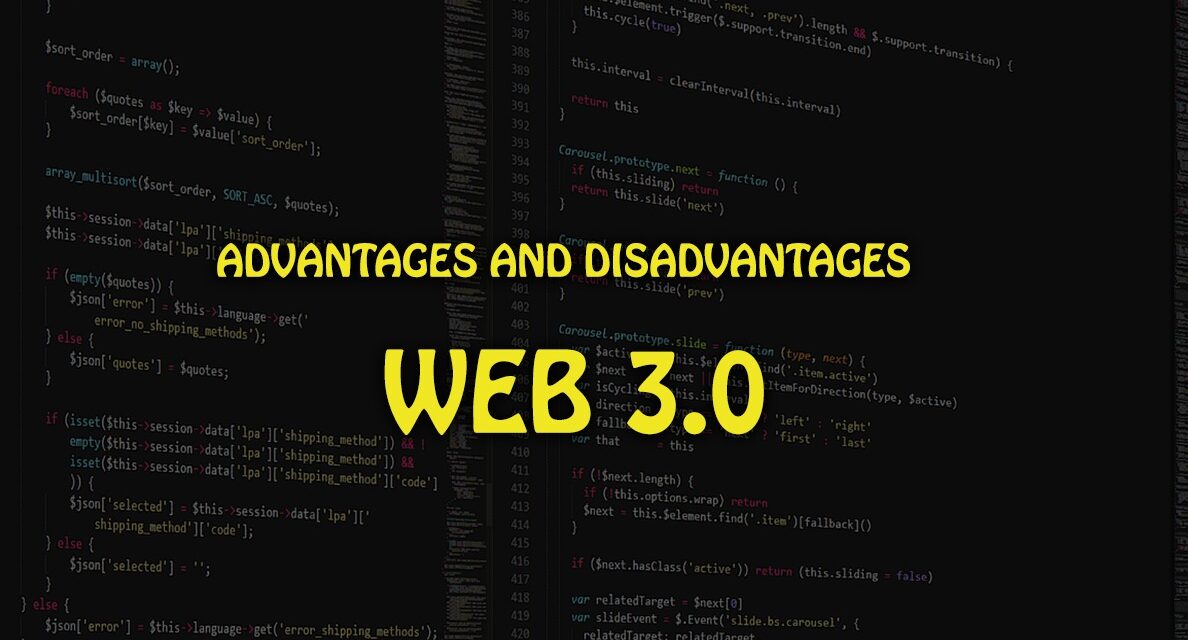Advantages and Disadvantages of Web 3.0
The evolution of the internet has been a remarkable journey, from its static origins in Web 1.0 to the interactive and social experience of Web 2.0. Now, we stand on the cusp of another major shift with Web 3.0, a decentralized and blockchain-powered version of the internet. While Web 3.0 offers exciting possibilities, it also comes with its set of advantages and disadvantages that will redefine the way we interact with the digital world.
Advantages of Web 3.0
- Decentralization and Data Privacy: One of the key advantages of Web 3.0 is its decentralized nature. By leveraging blockchain technology, data is distributed across a network of computers, reducing the risk of a single point of failure and enhancing security. Additionally, users have greater control over their data and can choose what information to share, promoting enhanced data privacy and protection.
- Trust and Transparency: Web 3.0 relies on transparent and tamper-resistant distributed ledger technology. Transactions and interactions on blockchain networks are publicly recorded, ensuring that participants can verify and trust the integrity of the data. This transparency eliminates the need for intermediaries in various applications, such as finance and supply chain management, reducing costs and potential for fraud.
- Empowering Users: Web 3.0 places a strong emphasis on user empowerment. With self-sovereign identity (SSI) systems, individuals have full control over their digital identities and personal information. Users can also participate more actively in decentralized applications (DApps) and social media platforms, where they are rewarded for their contributions and engagement.
- Innovation and Interoperability: Web 3.0 fosters an environment of innovation. It encourages developers to build DApps on existing blockchain platforms, leading to interoperability between different applications. This cross-platform compatibility enables a more seamless experience for users, regardless of the DApp they are using.
- Enhanced Security: Blockchain’s cryptographic techniques ensure robust security, making it challenging for malicious actors to tamper with data or launch cyberattacks. Smart contracts, a key feature of Web 3.0, facilitate automated and secure execution of predefined rules, further bolstering security.
Disadvantages of Web 3.0
- Scalability Challenges: While Web 3.0 brings several advantages, it also faces scalability issues. Popular blockchain networks like Ethereum have experienced congestion and high transaction fees during peak times. As adoption increases, solutions like sharding and layer-two scaling are being explored, but they are still under development.
- Learning Curve: Web 3.0 introduces new concepts like decentralized applications, digital wallets, and private keys, which can be confusing for non-tech-savvy users. The learning curve associated with these technologies might hinder mainstream adoption until user-friendly solutions are more widely available.
- Regulatory and Legal Challenges: The decentralized nature of Web 3.0 can present challenges in terms of regulatory compliance and legal oversight. As blockchain applications span various industries, regulators worldwide are grappling with how to address legal concerns, consumer protection, and potential misuse of the technology.
- Security Risks: While blockchain is known for its security features, it is not entirely immune to vulnerabilities. Smart contract bugs, hacking of centralized exchanges, and social engineering attacks targeting individual users are some of the risks associated with Web 3.0.
- Energy Consumption: Some blockchain networks, especially those relying on Proof-of-Work consensus mechanisms, consume significant amounts of energy. As environmental concerns gain prominence, efforts are being made to develop more energy-efficient consensus algorithms.
Conclusion
Web 3.0 represents a transformative era in the digital landscape, offering several advantages that promise to revolutionize various industries and empower users. Its decentralized nature, enhanced security, and user-centric approach herald a new era of online interactions. However, Web 3.0 is not without its challenges, including scalability issues, regulatory hurdles, and security risks. As technology continues to evolve, it is essential to address these disadvantages proactively and collaboratively to unlock the full potential of Web 3.0 for a more inclusive and secure digital future.





